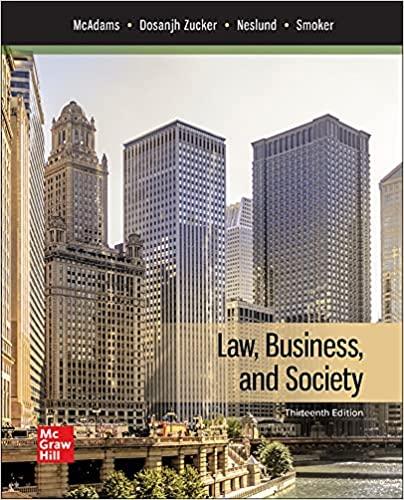Until September 2016, Wells Fargo Bank had enjoyed a successful strategy: bank branches were a shop, and
Question:
Until September 2016, Wells Fargo Bank had enjoyed a successful strategy: bank branches were a shop, and the financial products it sold were retail goods. Then Wells Fargo faced nearly $185 million in penalties for fraudulently opening depositor and credit card accounts. To meet lofty sales targets and performance expectations, Wells employees opened as many as 3.5 million accounts without customers’ knowledge or authorization. In his 2016 congressional testimony, then-CEO John Stumpf blamed lower-level employees for behavior that was contrary to the bank’s values and culture. Nevertheless, a 2017 internal report concluded that the leaders of Wells Fargo’s community bank division took an approach to sales and performance management that “prompted low-quality sales and improper and unethical behavior.” In the wake of the scandal, the bank had to pay substantial amounts in penalties and customer refunds. Stumpf was ousted as CEO, and about $75 million in executive compensation was clawed back.
Wells Fargo’s woes continued. In February 2018, the central banking system of the U.S., the Federal Reserve System (the Fed), blocked Wells Fargo’s ability to grow larger until it approved the bank’s remediation plan. In May 2018, then-CEO Timothy Sloan asked for more time to address the Fed’s feedback before submitting its plans for enhanced corporate governance, so the cap on its assets continued into 2019. Sloan stepped down as CEO in March 2019. Then, in June 2019, Wells Fargo settled class-action claims based on its auto insurance practices for approximately $390 million. Other practices of Wells Fargo also resulted in federal action. In April 2018, the Consumer Financial Protection Bureau levied a $1 billion fine for over-charging on mortgage interest rate-lock extensions and for running a mandatory insurance program for auto loans that added costs and sometimes led to the repossession of borrowers’ automobiles.
Wells Fargo’s investment banking division was also subjected to scrutiny, and four forbankers were fired amid both internal and regulatory investigations. An internal review revealed that Wells Fargo regularly over-charged for currency trades. Its foreign-exchange bankers relied on customers not bothering to check the charges and then blamed market fluctuation if a customer asked about the difference in trading fees.
Questions:
1. Echoing then-CEO John Stumpf’s congressional testimony, one observer argued that the employees, rather than the bank itself, should be held responsible for such conduct as fraudulently opening customer accounts--that regulatory fines ultimately harm the shareholders, who have already paid a price for managerial misconduct. How do you respond to this argument? Explain.
2. Another observer, who studied Wells Fargo’s financial reports in the wake of these scandals, noted that Wells Fargo did not seem to be incurring costs for increased compliance and risk management and that one reason the employee incentive structure led to employees’ misconduct was because the bank was not spending enough on monitoring its operations. How do you respond to this argument? Explain.
3. The Office of the Comptroller of the Currency (OCC), which in 2018 collected a $500 million penalty from Wells Fargo over its risk management practices, announced in 2018 that a review of about 40 banks showed that, over a three-year period, approximately 10,000 accounts had been opened without customer authorization. These banks were required to reimburse customers whose accounts were opened improperly. However, the OCC did not name the banks publicly. Does this change your view of Wells Fargo? What questions would you have for the OCC? Explain.
Step by Step Answer:

Law Business And Society
ISBN: 9781260247794
13th Edition
Authors: Tony McAdams, Kiren Dosanjh Zucker, Kristofer Neslund, Kari Smoker





